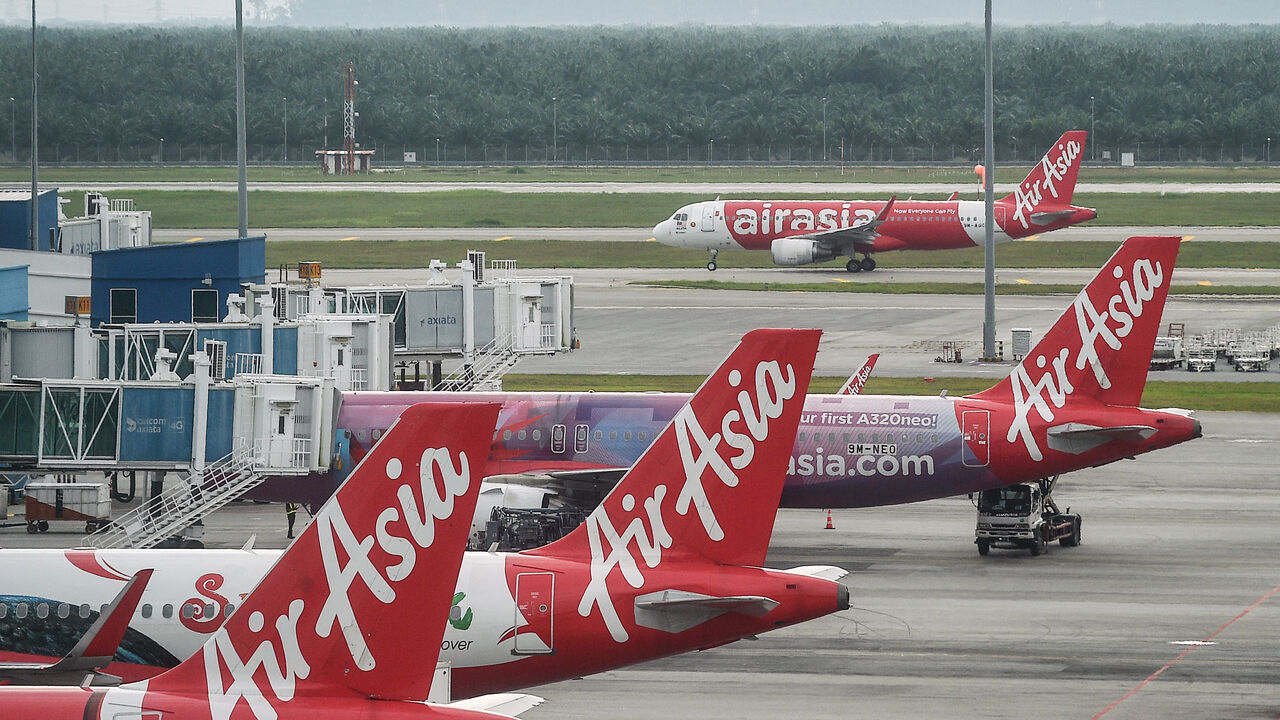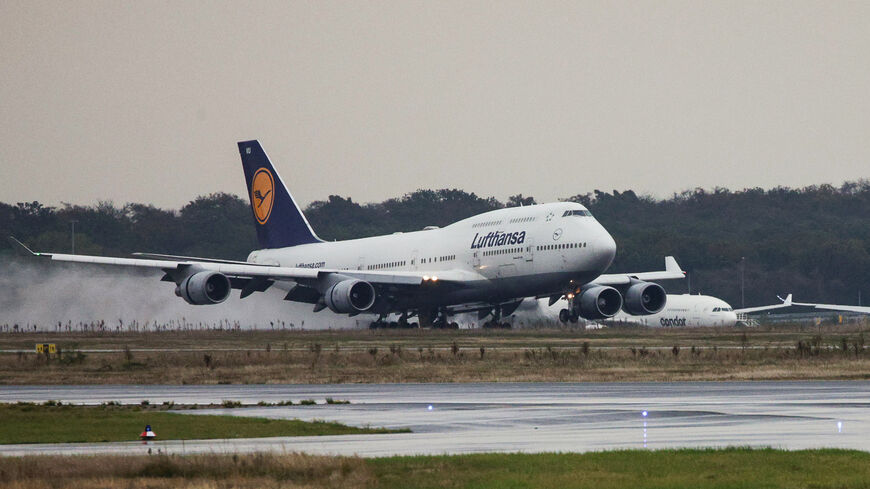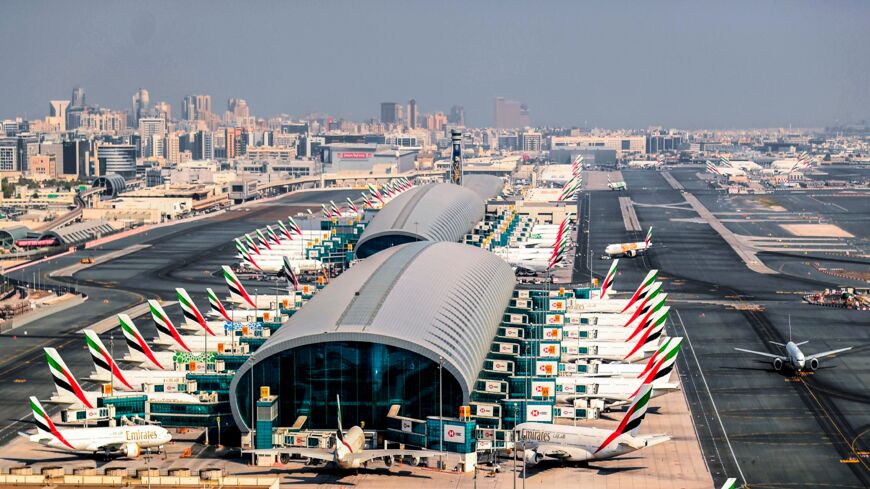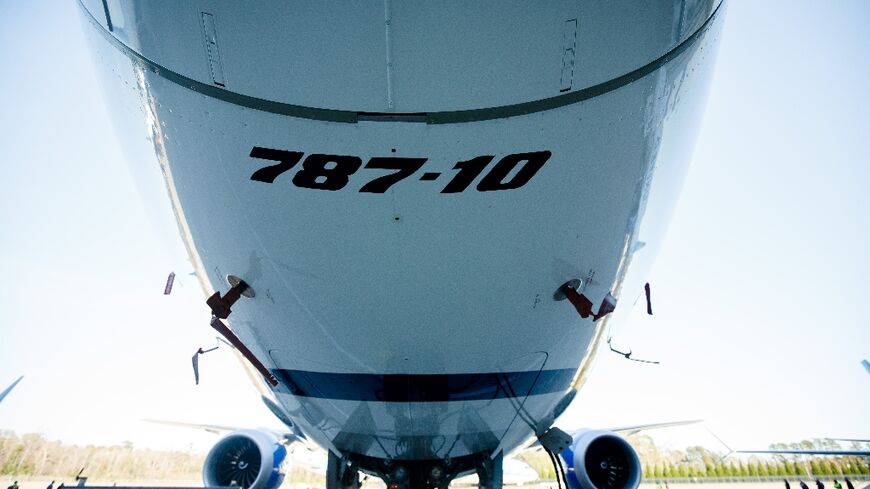Malaysia's AirAsia bets Bahrain can fuel Mideast growth, challenging Gulf hubs
The Malaysian carrier signed a preliminary pact with Bahrain to explore establishing the kingdom as its Middle East hub, with plans for dozens of daily flights by 2030.

AirAsia, Southeast Asia’s largest airline, hopes to use Bahrain as a launchpad to grow in the Middle East amid the carrier's ambitions to expand globally.
On Nov. 3, the Malaysian budget carrier signed a preliminary pact with Bahrain’s Ministry of Transportation and Telecommunications to explore establishing the Gulf kingdom as its Middle East hub. The pact, which could see AirAsia operate dozens of flights via Bahrain daily by 2030, is intended to mark the beginning of a long-term partnership to build a bridge linking Southeast Asia to Europe via one of the world’s fastest-growing aviation regions.
The move could help put Manama on the map at a time when the Gulf's skies are becoming increasingly crowded. While nearby hubs in the United Arab Emirates and Qatar have long dominated long-haul routes with premium carriers, AirAsia is betting on a smaller Gulf destination and a low-cost model to tap underserved routes.
Details: Tony Fernandes, AirAsia’s CEO, made the announcement at the Gateway Gulf Investment Forum in Bahrain. According to the letter of intent, AirAsia plans to explore flights from Malaysia, Thailand, Indonesia and the Philippines to Bahrain over the next five years, with onward connections to Europe and the United States.
By 2030, AirAsia hopes to operate over 25 daily flights via Bahrain, carrying over 20 million passengers over the next five years and contributing an estimated $8 billion to Bahrain’s economy, per a press release.
To achieve this, the carrier will evaluate the establishment of a Bahrain-based air operator certificate to fly narrow-body aircraft into cities in the Middle East, Central Asia, Africa and Europe. More broadly, the partnership encompasses future collaboration across cargo and logistics, maintenance and talent development.
Bahrain’s minister of transportation and telecommunications, Shaikh Abdulla bin Ahmed Al Khalifa, said in the press release that this partnership "reinforces Bahrain as a tourism and logistics hub in the Middle East, enhancing its position as a strategic connector linking Asia, the Middle East, Europe, Africa and the United States.”
This latest move builds on AirAsia’s recent regional expansion — although until this news, the Malaysian airlines appeared fixated on Saudi Arabia. In May 2025, AirAsia inked an agreement to introduce new routes to Riyadh and Dammam, while increasing flight frequencies to Jeddah from Kuala Lumpur. Two months earlier, Bloomberg reported that Saudi Arabia’s Public Investment Fund was set to invest $100 million into the Malaysia airline, which is seeking to return to growth mode following hits from the COVID-19 pandemic.
Why it matters: Bahrain’s selection as a potential hub illustrates the shifting dynamics of the Middle East's aviation industry. While leading airports in neighboring Gulf states handle tens of millions of passengers annually, Bahrain International Airport reported serving just 9.4 million in 2024, although this was up 7.3% year-on-year. For context, Dubai International Airport saw a record 92 million travelers pass through its terminals in 2024.
Yet with Manama making moves to grow as a hub, the Gulf could soon host another key transit node. If this pact helps Bahrain boost passenger traffic as planned, the region could be on track to host five major international airports within a few hours’ radius, intensifying competition for routes linking the East and West.
AirAsia’s low-cost approach also contrasts with the region’s best-known premium carriers, offering travelers and freight operators a new alternative. In an increasingly crowded Gulf market, AirAsia’s gamble on a smaller hub also shows that global players see opportunities to grow in the region outside of the largest destinations.







